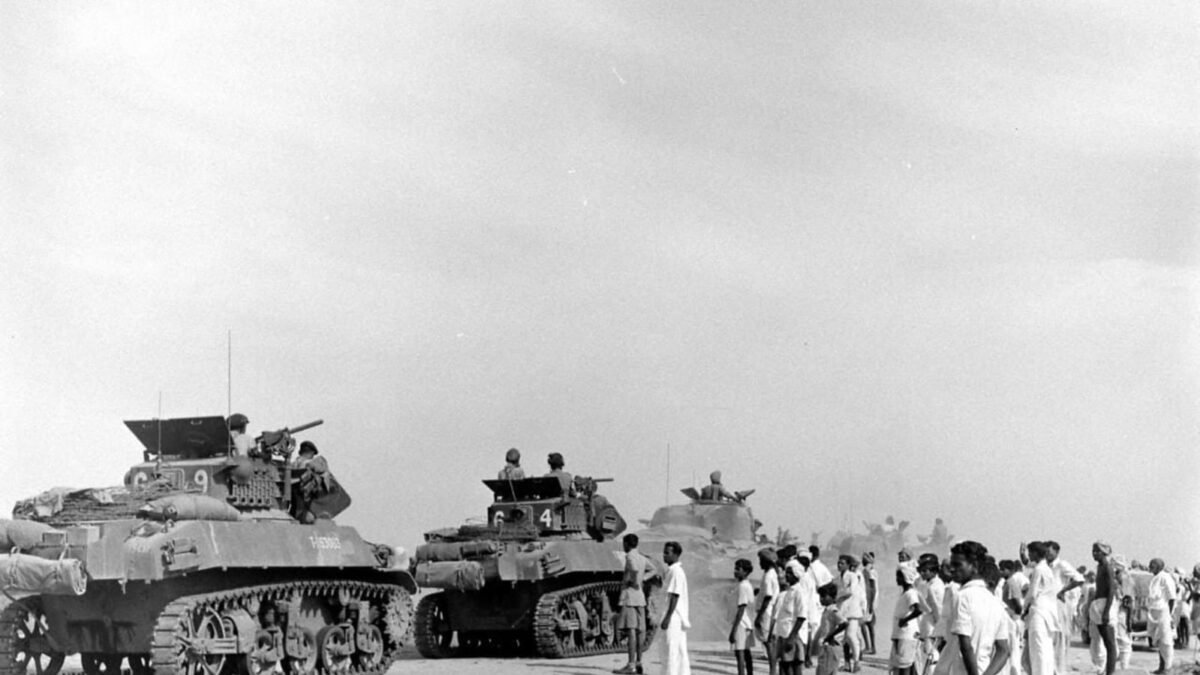This Sunday marks the completion of 75 years of the annexation of erstwhile Hyderabad state – comprising the entire Telangana state and bordering parts of Karnataka and Maharashtra – with the Indian Union, as a political slugfest over whether it should be called “liberation,” or “integration” continues to rage, ahead of the upcoming assembly elections in Telangana.

The princely state of Hyderabad, though geographically a part of India, was under the regime of Asaf Jahi rulers. It joined the Indian Union on September 17, 1948, more than a year after India attained Independence from the British, following a “police action”, code-named as Operation Polo, by the Indian military forces on then adamant ruler Mir Osman Ali Khan, the 7th Nizam, who refused to merge his mighty Hyderabad state into Indian dominion.
Read here: Hyderabad man thrashed to death by hotel staff after he asks for some extra curd
The Hindu hardliners call it “Telangana liberation day,” as they say the region was liberated from the clutches of Muslim ruler, the Nizam, who they accuse of making an attempt to establish an Islamic state within India, with the support from Pakistan and even by moving the United Nations.
For the first time, in 2022, the Bharatiya Janata Party (BJP)-led NDA government at the Centre announced the celebration of the “liberation day” last year with a huge parade and public rally at Secunderabad parade grounds. Union home minister Amit Shah attended the rally and inspected the ceremonial parade.
This year, Shah would be addressing the rally at the Secunderabad parade grounds to mark the completion of the 75 years of Telangana liberation.
On the other hand, the ruling Bharat Rashtra Samithi (BRS) and its ally– All India Majlis-e-Ittehadul Muslimeen (AIMIM), prefer to call it an “national integration day,” as it was on this day in 1948 that Hyderabad had become an integral part of the independent India.
Telangana chief minister K Chandrashekar Rao, who has been rejecting the demand for an official celebrations of Hyderabad state’s merger with India all these years, decided to celebrate the “integration day” at NTR stadium last year.
This year, he will be attending the ceremonial parade at Public Gardens as part of Telangana Jateeya Samaikyatha Vajrotsavaalu (Diamond Jubilee of Telangana national integration).
Both the BJP and the BRS have been making all out efforts to cash in on the ‘September 17 sentiment’ to appease the voters, ahead of the upcoming assembly elections.
According to Adapa Satyanarayana, professor of History at Osmania University, liberation or integration were just technical terms. “Strictly speaking, the people of the Hyderabad state had not waged any freedom struggle to join India. They fought against the feudal system, zagirdars and zamindars, who had the patronage of the Nizam. Following the police action, they got liberated from the feudal lords,” he said.
He said technically, it was not a liberation from anybody. “The last Nizam wanted Hyderabad to be an independent state, but he had to surrender to the Indian military. So, where is the question of liberation?” Satyanarayana asked.
The Operation Polo
Renowned military historian and former director of National Archives of India Dr S N Prasad, in his book – ‘Operation Polo – The police action against Hyderabad, 1948,’ said the Nizam issued a firman (royal decree) on June 26, 1947, announcing his intention of not joining either India or Pakistan, continue to remain an independent sovereign from August 15, 1947.
“He also tried diplomatically to secure dominion status for Hyderabad within the Commonwealth. But the British government did not care to displease the new Indian government and did not want any further involvement in the country, and the Nizam’s request was turned down,” he said.
On November 29, 1947, the Nizam government signed a standstill agreement with the Indian government, to resolve a legal stalemate over the control of several institutions like the post, telegraph, telephone and railways etc, besides issues regarding currency, trade, passport and dealings with foreign powers.
Subsequently, the Indian government sent senior Congress leader K M Munshi as India’s Agent-General to Hyderabad to decide the terms of the standstill agreement.
The next few months witnessed a turbulent period in the Hyderabad state, due to the emergence of Telangana armed rebellion by the Communists, who waged a war against the feudal rule of the Nizam. Initially targeting zamindars and deshmukhs, the Communists soon launched a full-scale armed struggle against the Nizam. With the Nizam’s armed forces unable to subjugate the armed struggle, he had to depend on the Razakars, which led to violence and atrocities in rural Telangana, Prasad said in his book.
At the same time, the Nizam government started violating the agreement signed with the Indian government in many ways, including: foreign affairs, defence, and communications, by interfering with border and railway trade, and secretly lending Pakistan 15 million pounds.
“Naturally, the Indian government was apprehensive of India becoming Balkanized if Hyderabad remained independent. While Prime Minister Jawaharlal Nehru thought of resolving this secessionist effort through negotiations, Sardar Patel took a firm position and had no tolerance for negotiations, ordering the seizure and annexation of Hyderabad,” Satyanarayana said.
The Nizam started strengthening his own army, apart from large-scale recruitment by the Razakars. He sought support from the Portuguese administration in Goa and Pakistan. He also made unsuccessful attempts to seek intervention from the United Nations by sending a cablegram, dated August 21, 1948.
Even before the UN took up the matter, the Indian military launched “Operation Polo,” which was also referred to as Operation Caterpillar, on September 13, 1948. An economic blockade was enforced, preventing entry of all essentials into the Hyderabad state. An emergency was declared after 36,000 Indian troops commanded by Major General J N Chowdary, entered Hyderabad.
It was a two pronged attack, with the main force moving along the Solapur-Hyderabad road covering a distance of 186 miles, while another division commanded by Major General Rudra marching along the Vijayawada-Hyderabad road. The Indian Air Force resorted to aerial bombing at Bidar and Gulbarga, inflicting several casualties. “Though they gave a little resistance during the first two days, the Razakars and Nizam’s forces fled from the field. On September 17, 1948 the Nizam’s forces under the command of Syed Ahmed El-Edroos surrendered to the government of India. The Nizam accepted his defeat and Hyderabad became a part of the Indian Union,” Satyanarayana said.
It was estimated that 32 people were killed and 97 others injured on the Indian side, while 490 people were killed and 122 others were wounded from Hyderabad.
At 4.30 pm on September 17, 1948, Nizam’s Prime Minister Mir Laik Ali made a statement from the Nagpur station of All India Radio (Akashwani), declaring ceasefire and announcing the resignation of his cabinet, besides banning the Razakars. Immediately afterwards, the Nizam issued a firman over the radio, ordering a ceasefire with effect from 5 pm.
Read here: Top Maoist leader held in Hyderabad: Police
He expressed his desire to “open a new chapter of friendliness” with India, and wanted his people to live in “integrated harmony” with the people of India. He also disclosed that the complaint against India in the UN would not be pressed. On September 22, 1948, he informed the UN Secretary-General by cablegram that he had withdrawn the complaint.
With the surrender of Nizam and Hyderabad state the last and the biggest princely State of India had become an integral part of the Indian Union.
The Operation Polo, or the police action, was also not without controversy. The operation was marred by allegations of massive excesses and atrocities perpetrated against the innocent Muslims of the Hyderabad state on and after September 17.


